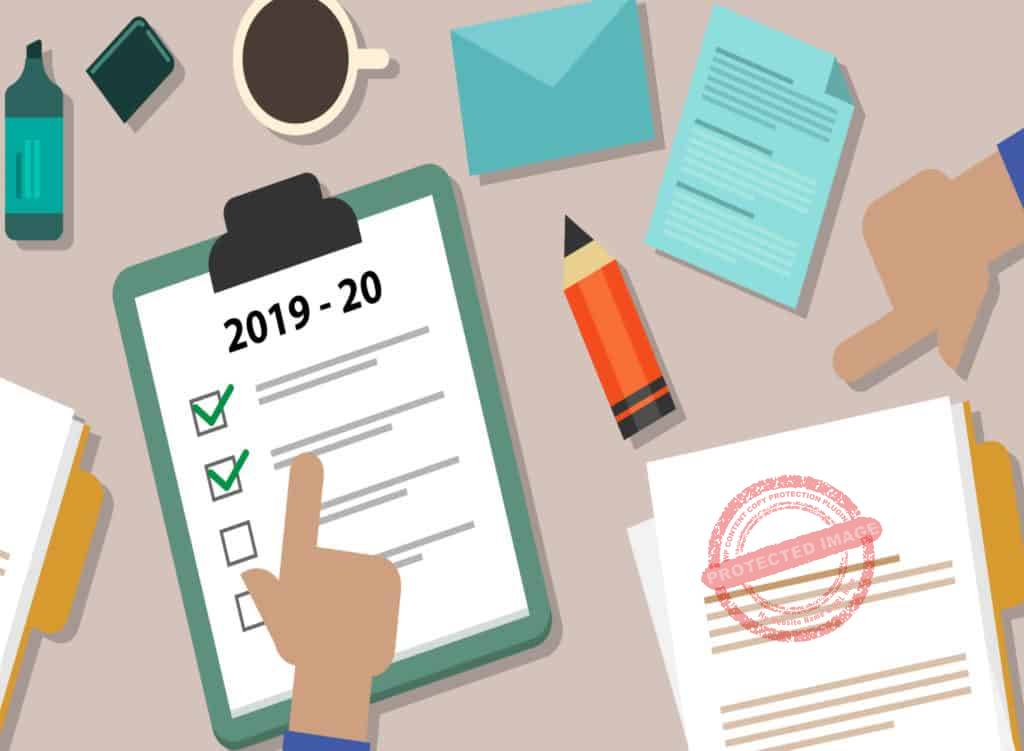-
Unlocking the Secrets of Effective Time Management: 10 Tips for a Productive Day
Hello, dear readers! Have you ever felt like there just aren’t enough hours in the day to accomplish everything you want? Well, you’re not alone. Time is a precious resource, and mastering the art of effective time management can make all the difference in your life. In this blog post, we’ll explore the secrets to using your time effectively and achieving your goals without feeling overwhelmed.
The Value of Time
Before we dive into the strategies for effective time management, let’s take a moment to appreciate the true value of time. Time is the one resource that’s truly finite – once it’s gone, it can never be reclaimed. It’s the great equalizer; everyone gets the same 24 hours in a day. How you choose to use those hours can determine your success, happiness, and overall well-being.
Strategies for Effective Time Management
1. Set Clear Goals:
Effective time management starts with setting clear and achievable goals. What do you want to accomplish today, this week, this month, or even in the long term? Having a clear sense of purpose will help you prioritize your tasks and stay focused.
2. Prioritize Tasks:
Not all tasks are created equal. Some are urgent, some are important, and some are both. Use the Eisenhower Matrix to categorize your tasks into four quadrants: urgent and important, important but not urgent, urgent but not important, and neither urgent nor important. Focus on the important tasks first.
3. Create a To-Do List:
A to-do list is your best friend when it comes to time management. Write down all the tasks you need to complete and organize them by priority. Check off tasks as you complete them, and don’t forget the satisfaction of crossing items off your list.
4. Time Blocking:
Time blocking is a powerful technique where you allocate specific blocks of time to specific tasks. For example, you might block out 9 AM to 11 AM for focused work, 11:30 AM to 12:30 PM for meetings, and so on. This method can help you stay on track and avoid distractions.
5. Eliminate Distractions:
Distractions can be time thieves. Identify your common distractions – be it social media, noisy coworkers, or your phone – and take steps to minimize them. Consider using apps or tools that block distracting websites during work hours.
6. Learn to Say No:
Sometimes, effective time management means knowing when to say no. If taking on a new task or commitment will overload your schedule and compromise your existing priorities, politely decline or negotiate a more manageable timeline.
7. Delegate When Possible:
You don’t have to do everything yourself. Delegating tasks to others can free up your time for more important responsibilities. Trust your team or colleagues to handle tasks within their expertise.
8. Take Regular Breaks:
It may seem counterintuitive, but taking short breaks can actually boost your productivity. Use techniques like the Pomodoro Technique, where you work for 25 minutes and then take a 5-minute break. This can help refresh your mind and prevent burnout.
9. Learn to Batch Tasks:
Batching similar tasks together can save time and mental energy. For example, if you have several emails to respond to, set aside a specific time to tackle them all at once, rather than checking your inbox sporadically throughout the day.
10. Review and Adjust:
Effective time management is an ongoing process. Regularly review your goals and priorities, and adjust your time management strategies accordingly. What worked yesterday may not work tomorrow, so be flexible and open to change.
Mastering the Art of Time Management
In a world filled with endless distractions and demands on our time, effective time management is the key to achieving your goals and maintaining a healthy work-life balance. By setting clear goals, prioritizing tasks, and implementing time management strategies, you can unlock the full potential of your day.
Remember, time is a precious resource, and how you choose to use it ultimately defines your success and happiness. So, take charge of your time, make the most of every minute, and watch as your productivity and overall well-being soar to new heights. Here’s to a more productive, fulfilling, and balanced life!
-
Procrastination: Your Sneaky Foe and How to Beat It
Hello, dear readers! Have you ever found yourself putting off important tasks until the last minute, only to feel stressed and overwhelmed? Don’t worry; you’re not alone. Procrastination is a common challenge that we all face at some point. But the good news is that with the right strategies and a dash of determination, you can conquer procrastination and boost your productivity. In this blog post, we’ll explore why we procrastinate and provide you with practical tips on how to avoid it.
The Procrastination Trap
Procrastination – the art of delaying tasks that require attention – is a sneaky foe that can sneak up on us when we least expect it. It’s the “I’ll do it later” mindset that often leads to unnecessary stress and missed opportunities. But why do we procrastinate in the first place?
At its core, procrastination is often rooted in our psychology. We might procrastinate to avoid tasks that make us anxious, overwhelmed, or simply bored. The instant gratification of more enjoyable activities, like scrolling through social media or watching cat videos, can also lure us away from our responsibilities.
But fear not! Procrastination is a habit, and like any habit, it can be broken. Let’s dive into some practical strategies to help you overcome procrastination and boost your productivity.
Tips to Beat Procrastination
1. Understand Your Why:
Start by understanding why you’re procrastinating. Is it because the task feels too daunting, you lack motivation, or you simply don’t know where to start? Identifying the root cause can help you address it effectively.
2. Break It Down:
Large, intimidating tasks are often prime candidates for procrastination. Break them down into smaller, more manageable sub-tasks. This not only makes the overall goal less overwhelming but also gives you a sense of progress as you complete each sub-task.
3. Set Clear Goals:
Define clear and specific goals for your tasks. When you have a concrete objective in mind, it becomes easier to stay focused and motivated. Rather than saying, “I’ll work on the project today,” say, “I’ll complete the project introduction by noon.”
4. Prioritize:
Determine which tasks are most urgent and important, and tackle them first. Procrastination often thrives when we focus on less critical tasks to avoid the important ones. Use tools like the Eisenhower Matrix (urgent vs. important) to prioritize effectively.
5. Create a To-Do List:
Write down a to-do list with all the tasks you need to accomplish. Having a visual reminder of your responsibilities can be a powerful motivator. Start with the most crucial tasks and work your way down the list.
6. Set Deadlines:
Self-imposed deadlines can be a great way to combat procrastination. When you have a specific timeframe in which to complete a task, you’re more likely to stay on track. Be realistic with your deadlines to avoid unnecessary stress.
7. Use the Two-Minute Rule:
If a task takes less than two minutes to complete, do it immediately. This simple rule helps clear small tasks off your plate quickly and reduces the chances of procrastination.
8. Minimize Distractions:
Identify common distractions in your workspace and take steps to minimize them. Turn off notifications, use website blockers, or find a quiet place to work. Create an environment that encourages focus.
9. Find Accountability:
Share your goals and deadlines with a friend or colleague who can hold you accountable. Sometimes, the fear of disappointing someone else can be a powerful motivator.
10. Practice Self-Compassion:
Be kind to yourself. We all have days when productivity seems out of reach. Instead of dwelling on missed opportunities, acknowledge your efforts and commit to doing better next time.
Procrastination Can Be Defeated
Procrastination may be a stubborn foe, but with determination and the right strategies, you can overcome it. Remember that everyone procrastinates from time to time; it’s a part of being human. What sets successful individuals apart is their ability to recognize procrastination and take action to combat it.
So, the next time you catch yourself saying, “I’ll do it later,” take a moment to reflect on why you’re procrastinating and implement one of the strategies mentioned above. With practice, you’ll find that procrastination loses its grip on your productivity, and you’ll become the master of your time.
Don’t let procrastination rob you of your potential. Embrace the challenge, stay focused, and watch as your productivity soars to new heights. Here’s to a more productive and procrastination-free future!
-
Mastering the Art of Work Planning: Your Path to Productivity
Hello, dear readers! Have you ever felt overwhelmed by the sheer volume of work on your plate, unsure of where to start or how to manage it all effectively? If so, you’re not alone. Work planning is a valuable skill that can help you take control of your tasks, reduce stress, and boost productivity. In this blog post, we’ll explore the art of work planning, breaking it down into actionable steps to help you achieve your goals with ease.
The Power of Work Planning
Work planning is like having a roadmap for your professional journey. It allows you to prioritize tasks, allocate resources efficiently, and maintain a clear sense of direction. Without a plan, you may find yourself lost in a sea of responsibilities, struggling to make meaningful progress.
Effective work planning is not about creating complex documents or rigid schedules; it’s about finding a method that works for you and helps you achieve your objectives. Let’s dive into the steps you can take to set up a successful work plan.
Steps to Create a Work Plan
1. Define Your Goals:
Start by identifying your overarching goals. What do you want to accomplish in your work? Having clear objectives provides a sense of purpose and direction.
2. Break Down Tasks:
Divide your goals into smaller, manageable tasks. Breaking them down into bite-sized pieces makes them less daunting and easier to tackle.
3. Prioritize Tasks:
Determine which tasks are most urgent and important. You can use techniques like the Eisenhower Matrix to categorize tasks into four quadrants: urgent and important, important but not urgent, urgent but not important, and neither urgent nor important. Focus on the important and urgent tasks first.
4. Set Deadlines:
Assign specific deadlines to each task. Having timeframes helps create a sense of urgency and keeps you on track.
5. Create a To-Do List:
Write down all the tasks you need to complete. Use a to-do list, digital tools, or a simple notebook – choose what works best for you. Organize your list by priority, starting with the most crucial tasks.
6. Allocate Resources:
Consider what resources you need to accomplish each task – whether it’s time, materials, or assistance from others. Ensure you have everything you need to get the job done.
7. Create a Schedule:
Organize your tasks into a schedule or calendar. Allocate specific blocks of time to work on each task. Be realistic about how much time you need for each one.
8. Be Flexible:
While planning is essential, flexibility is equally crucial. Unexpected challenges or opportunities may arise. Be prepared to adjust your plan as needed.
9. Eliminate Distractions:
Identify potential distractions in your work environment and minimize them. Turn off unnecessary notifications, close irrelevant browser tabs, and create a workspace conducive to focus.
10. Review and Reflect:
Regularly review your work plan to track your progress. Reflect on what’s working well and where you can improve. Adjust your plan as your goals evolve.
Your Roadmap to Success
Work planning is not a one-size-fits-all approach. What matters most is finding a method that suits your personality, work style, and objectives. The key is to create a structured framework that guides you while allowing room for adaptation.
Remember that work planning is not about adding more stress to your life but about making your work more manageable and enjoyable. It’s about taking control of your tasks, setting priorities, and ensuring that you have a clear path to follow.
So, the next time you’re faced with a mountain of work, take a step back, and invest some time in work planning. With practice, you’ll find that planning becomes second nature, and you’ll navigate your professional journey with greater confidence and efficiency. Here’s to your success and a well-organized, productive work life!




